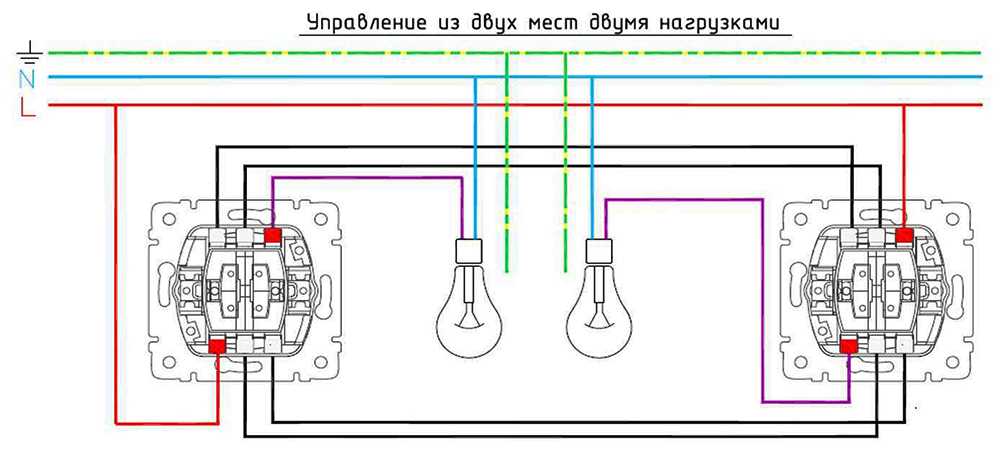The saws have been used for thousands of years with their further development and improvement in the course of time. It’s difficult to realize, but the predecessors of a present-day saw were created more than 4 thousand years ago. They were made from stones with serrations from one side. Such saws were used for cutting of wood, bones and soft stones. Thus, even the pre-metal ancient saws were indispensable tools in many fields of application of human beings to survive.
And even nowadays, if the mankind was deprived of the saws, the progress would be frozen. It relates to the fact that operation of commercial and industrial enterprises would be hardly possible without a tool, capable of cutting of any types of materials.
Modern saw is the must-have of any household, as well. At least one hand saw should be owned by any man as a part of a basic tool set. And it goes without saying, that any craftsman or DIY enthusiast may boast a whole range of various types and models.
Herein, I am going to review the most common types of saws with the main classifications in order to give you a general idea about these exceptional tools.
Table of Content
- 1 Power saws
- 2 Hand saws
Power saws
Electric, gas or air powered saws present a new milestone in the development of hand tools. For instance, the electric motor and the saw blade give a perfect combination of precision and power. The power saws ensure successful results with no fatigue of a user even during the extended operations. Thus, if you aspire to get highly accurate cuts, you should take a closer look at the following types.
Chain saw
It is a portable saw with a looped chain and multiple teeth attached to it. Its guide bar and chain can be removed, thus they fall into accessories category, which come in different types suitable for a specific application. However, chain saws are mainly used in woodworking industry, in particular for wood felling or limbing, etc. Chainsaws are typically equipped with a two-stroke gas engine or with an electric motor. Electric chain saws can be corded and cordless. The latter is to be run by batteries. Besides, they are getting more popularity with each day, due to the efficiency and power which are highly competitive with those of gas and electric powered counterparts.
However, I would like to distinguish gas powered chain saws with their immense power and high reliability. They can be used anywhere, under any weather conditions, even in the heavy rain or snow. The gas-powered chain saw is capable to cut through even the hardest wood. It is an obvious advantage in comparison with the electric models. Besides, the gas engine is less sensitive, it will not be overheated in case of continuous running. More than that, the most advanced chain saws from the trusted brands have durable design and do not require specific training before their operation and its maintenance is not a big deal at all.

Band saw
This type of saw has a sharp blade in the form of a continuous band stretched between two or three wheels. The band saws are suitable for intricate cutting of wood and a variety of other materials like metal or plastic. Besides, band saws are widely used in the food industry for cutting of meat in big production volumes.
Electric band saws are offered in corded and cordless designs. The latter is a battery-powered, compact and portable tool which allows operation at any locations, including an overhead work. However, they are limited in the cutting capacity in comparison with the corded counterparts. Besides, the cordless models can hardly withstand an extended operation, as the battery life is limited, even that of the most advanced lithium-ion products.
Circular saw
The circular saw is a handheld power tool with a toothed blade, the standard diameter of which can be from 5.5 up to 7.25 inches. In order to cut a workpiece the blade is spinning around an arbor at a preselected speed. The large models are used as the stationary professional-grade equipment, mounted on a stand or mill. The circular saws of smaller size are quite compact and considered to be portable tools. Circular saws can be powered by electricity, gas or air. The latter is used to drive some heavy-duty machines at a production site, with pneumatic line available.
Miter saw
A miter saw is a benchtop tool used for an accurate cutting at a selected angle with the help of an attached circular blade. Miter saw design is commonly compact, that is why it is still classified as a portable unit. However, the blade size is bigger in comparison with a standard circular saw blade and ranges from 8 to 12 inches. Depending on a specific design, some models are also capable of making lengthy cuts due to a railing system, as well as mitering, beveling and sliding. Most commonly, such saw is used for woodworking purposes and comes in corded or cordless designs.
Radial arm saw
Radial arm saw is unique in its design. The circular blade of a saw is installed at a mobile arm. Rather than having the blade attached to the table, the blade is instead attached to a mobile arm. The blade is moving along the arm latter while the workpiece is held in place while cutting. In addition to ripping, a radial arm saw is capable of dado and miter cuts. However, after invention of a miter saw in 1970s they were gradually going off the market due to higher efficiency and safety of a more advance equipment.
Tile saw
A tile saw is a portable tool designed for tile, glass, marble, stone and porcelain tile resawing. Also this type of saw allows making angled and square cuts. Its mobility is deemed to be the most beneficial feature as you won’t have to spend time on transferring the materials from a storage area to a working place and back. However, tile saws are available in different sizes. Some models are stand-alone units; others require some supporting base to be placed on. The modern tile saws are equipped with a water feeding pump to cool down a cutting blade and reduce the amount of dust and debris during operation.
Table saw
A table saw is often named as a circular saw. However, as a rule, the disk blades of this saw are larger. They are driven by a powerful motor which is mounted under the working table. During a cutting process a blade is rotating at high speed rates in place and the material is moved against it. Thus, quick and accurate cuts in different materials like wood, plastic or metal can be achieved. There is a huge variety of table saws for various applications. In particular, portable light-weight models are designed for residential and DIY purposes. These compact options are mainly corded tools. However, recently the battery-powered compact models have been gaining its popularity among many craftsmen and professionals. The stationary models are heavy and bulky machines to perform even the most heavy-duty cutting.
Panel saw
As this saw is designed to cut large panels and sheets in pre-selected sizes, one of its main parts is a huge working table to ensure stability during cutting process. The workpiece to be cut can be loaded from the left or right side and it rolls smoothly through a saw blade by a rolling mechanism. Thus cutting becomes more efficient and accurate. Panel saws are offered in horizontal and vertical designs on the market. A horizontal machine is similar to a large table saw with an additional sliding table to feed the material to be cut. A vertical panel saw has smaller footprint. They come in two designs. One with a traveling saw blade and another with a fixed blade and rails for moving a workpiece against it.
Jigsaw
A jigsaw is a handheld tool with a short blade which runs in a reciprocating motion while cutting. This saw is specifically designed for making curved and shaped cuts. Regardless its light weight and compactness a jigsaw quite powerful and efficient, indeed. It can easily handle various materials like wood, plastics, ceramics, non-ferrous metals and even thin cement slabs. It is better to prefer battery-powered options, thus enabling even more freedom from power cables and extension cords of a corded option. However, besides corded and cordless jigsaws, pneumatic models are also available on the market. They will be mostly suitable for job sites with a high humidity and for those with an air compressor available.
Scroll saw
A scroll saw is similar to a band saw in its design and operation. However, it is a scroll saw capable of making the most delicate and intricate cuts and patterns from different materials. Besides it uses a thin reciprocating blade which is mounted between side arms of a tool opposed to a band saw. Another benefit of a scroll saw is its working table which contributes to better stability during the process and the final accuracy of cuts. Such units are capable to perform various tasks, from making wooden puzzles to creating sophisticated furniture ornaments.
Reciprocating saw
The name of this saw originates from a principle of its operation, back-and-forth and pendulum actions of its blade. A reciprocating saw has a shoe which shall be positioned close to a workpiece to be cut thus extending the service life of a blade and making the cutting process more efficient. Such saw is an indispensable tool for professional builders both at construction or demolition sites. They are primarily designed to make rough cuts in various materials like wood, plastics, metal or some composites, as one type of blade can cut both wood and metal, for instance. Being a handheld tool, such saw is most convenient in use for various hard-to-reach areas due to its compactness and light weight. These tools are available in corded and cordless designs, but corded ones are more popular. They are more powerful, versatile, lightweight and cheaper in comparison with their battery-powered counterparts.
Rotary saw
This handheld type of saw can be used for a wide variety of tasks. Initially, it was designed to make cut-outs in drywall, and then via further improvements it has been developed for cutting, sanding, sharpening and other light-duty cuttings. The cutting is performed by its spiral bit which runs in a twisting motion. Thus, cutting can be performed in any direction. It is possible to select corded or cordless option depending on a specific application it is intended for.
Oscillating saw
Is a part of a multifunctional oscillating power tool which can be used for grinding and sanding of various surfaces with a range of attachments, as well. Its operation is based on a slight side-to-side motion which is close to vibration. Thus, the friction is created between a sanding attachment and a tool, and a high cutting efficiency is achieved by a blade to make accurate and clean cuts. There is a wide a range of oscillating tools available in corded and cordless designs. They are mainly used for a number of interior works related to repair or renovation. In particular, this tool can be used with a blade attachment for flush cutting, removal of rusty fittings, cutting of flooring as a part of a preparatory work. Besides, this tool is perfect in a hard-to-reach areas.
Hand saws
Hand saws have been developing gradually in the course of time. Some of them considered to be versatile tools like a traditional hand saw, others were developed for a particular application, like Jab saws. You may think, that the hand saws are outdated tools. However they are still widely used by DIY enthusiasts, professional craftsmen and contractors. Let’s review the most common types.
Hand saw
Commonly a manual hand saw is a basic tool at any household. It has comparably small number of sharpened teeth per inch. Most of these saws are suitable for rough cutting of woods. However, some of them can handle cutting of other materials like plywood, wallboard, plastic, etc.
Crosscut saw
This type of saw has been created to make deep cuts in wood. A crosscut saw has comparatively thick blade with big sharp tapered teeth. Traditionally these tools are made with two handles, one handle at each side of a blade. These handles are mainly hold by two people to make a perpendicular cut through a tree trunk. A less common one-handle crosscut saw is suitable for rough cutting of branches and wooden planks. It can be used as well for a coarse cutting of multiple materials at any construction site or in the woods.
Back saw
Fret saw
This hand saw has a thin and extra-fine tooth blade which can be used for making curved or shaped cuts in soft materials. A fret saw comes with a bended deep frame which makes it a big-size tool in comparison with its manual counterparts. Its blade is fixed and can’t rotate, thus making a fret saw less useful when dealing with cutting out some narrow pieces.
Coping saw
A coping saw is very similar in design to a fret saw. However, it is more suitable for rough and coarse cutting in comparison with a fret saw which is capable of making delicate and more accurate cuts. The advantage of a coping saw is its movable blade which can be easily turned to any desired direction. The Bahco 301 coping saw features such rotating blade to facilitate cutting of any intricate patterns in variety of materials. Another benefit of this saw is its high-quality materials which are truly reliable, as it is made by the international supplier of premium quality hand tools with a proven reputation.
Bow saw
Hack-saw
A hack-saw is a fine-toothed saw developed for metal cutting, with a particular blade type for this purpose. It has similar design to a bow saw. However, the latter is mostly used for woodworking applications. The DEWALT DWHT20547L is offered as a hack-saw but features 5 various saw configurations in one frame. Besides, it has a very durable design, meaning it can be used for the a heavy-duty cutting on a regular basis for many years.
Japanese saw
A Japanese saw is equipped with a straight handle and a flexible blade with fine teeth. It cuts materials by means of a pulling stroke, thus it is also called as a pull saw. This type of saw is more precise in comparison with a back saw. Besides, due to its shape, this saw can be used in the places which are hard-to-reach by other bigger-size saws. Originally, this tool was intended to cut soft wood due to a specific arrangement and shape of its teeth. So, it performs worse than European saws when cutting hard wood stock. Also, a Japanese saw is offered in various designs which are required by particular cutting jobs.
Pruning saw
Pruning saws most often come with a 13-15 inches blade protruding from a pistol-type handle. A blade has coarse teeth which can cut in both directions thus improving cutting efficiency. Pruning saws are most common tools of householders. Besides, they are widely used by gardeners and landscapers to handle tree branches or thick vines, etc.
Keyhole saw
A keyhole or a compass saw is designed to cut through soft materials like drywall and plywood with its pointed end, for further cutting of larger holes. Thus, this saw doesn’t demonstrate a high accuracy, but serves as a proper tool for a preliminary rough work.
Veneer saw
It is another field-specific saw equipped with a short double-edged blade with approximately 13 teeth per inch. As its name says, this saw cuts veneer. However, a short blade of a veneer saw limits its usage for the majority of other cutting tasks.



